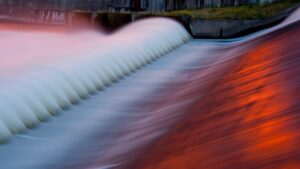Here’s how Sovereign has underscored Kasiya’s Tier 1 credentials

Sovereign's Kasiya project is looking mighty fine. Pic: naruecha jenthaisong via Getty Images
Sovereign’s Expanded Scoping Study for the Kasiya project in Malawi has further enhanced its potential to become a major producer of natural rutile and graphite.
The study, which is based on its April 2022 update to resources that tripled contained rutile to 18Mt, outlined a massive 79% increase in after-tax net present value to US$1.54bn and a 101% increase in annual average earnings before interest, taxes, depreciation, and amortisation (EBITDA) to US$323m.
Life of mine revenue was increased by 92% to US$12bn while operating costs were reduced by 10% to US$320/t in exchange for a modest 12% increase in capex to initial Stage 1 production.
This capex of US$372m is still relatively low for a project of this scale due to exceptional existing available infrastructure which offers significant cost reductions and provides optionality and scalability.
Sovereign Metals (ASX:SVM) adds that the low operating cost and high margins are due to the deposit size, zero strip ratio of soft, friable high-grade mineralisation from surface, amenability to hydro-mining, conventional processing, deposit location and low transport costs.
These also lend to substantially lower CO2 emissions compared to current alternatives.
Critical rutile and graphite producer
All these factors mean that Kasiya has the potential to become a major producer with steady state output of 265,000t of rutile and 170,000t of graphite per annum over a 25-year mine life.
Market fundamentals are also extremely favourable with both rutile – a valuable titanium dioxide feedstock – and graphite considered to be critical raw materials for the US and the EU.
The former is already in structural deficit with current global supply estimated to decline by 45% in the next three years while graphite demand is expected to soar as electric vehicle production is forecast to jump 12-fold by 2040.
“The Expanded Scoping Study demonstrates Kasiya is a Tier 1 minerals project being the largest natural rutile resource and one of the largest graphite resources in the world,” managing director Dr Julian Stephens noted.
“The project benefits from existing high-quality infrastructure and has inherent ESG advantages.
“Natural rutile has a far lower carbon footprint compared to other titanium feedstocks used in the pigment industry, and natural graphite is a key component in lithium-ion batteries – crucial to decarbonising the global economy.
“Further, the vast majority of power for the planned Kasiya mining operation will be supplied by renewable hydro and solar – giving the mine itself a very low carbon footprint.
“The future development of the Kasiya Rutile Project will bring substantial benefits to Malawi in terms of GDP, royalties, taxes, employment and training, local business opportunities and community development.”
Simple operations
Kasiya is currently proposed as a large-scale operation that will process soft, friable mineralisation from surface.
This will employ conventional hydro-mining to produce a slurry that is pumped to a wet concentration plant where the material is sized.
A Heavy Mineral Concentrate (HMC) is produced via processing the sand fraction through a series of gravity spirals. The HMC is transferred to the dry Mineral Separation Plant (MSP) where premium quality rutile is produced via electrostatic and magnetic separation.
Meanwhile, graphite concentrate is collected from the gravity spirals and processed in a separate graphite flotation plant, producing a high purity and high value coarse-flake graphite product.
This article was developed in collaboration with Sovereign Metals, a Stockhead advertiser at the time of publishing.
This article does not constitute financial product advice. You should consider obtaining independent advice before making any financial decisions.
Related Topics

UNLOCK INSIGHTS
Discover the untold stories of emerging ASX stocks.
Daily news and expert analysis, it's free to subscribe.
By proceeding, you confirm you understand that we handle personal information in accordance with our Privacy Policy.








